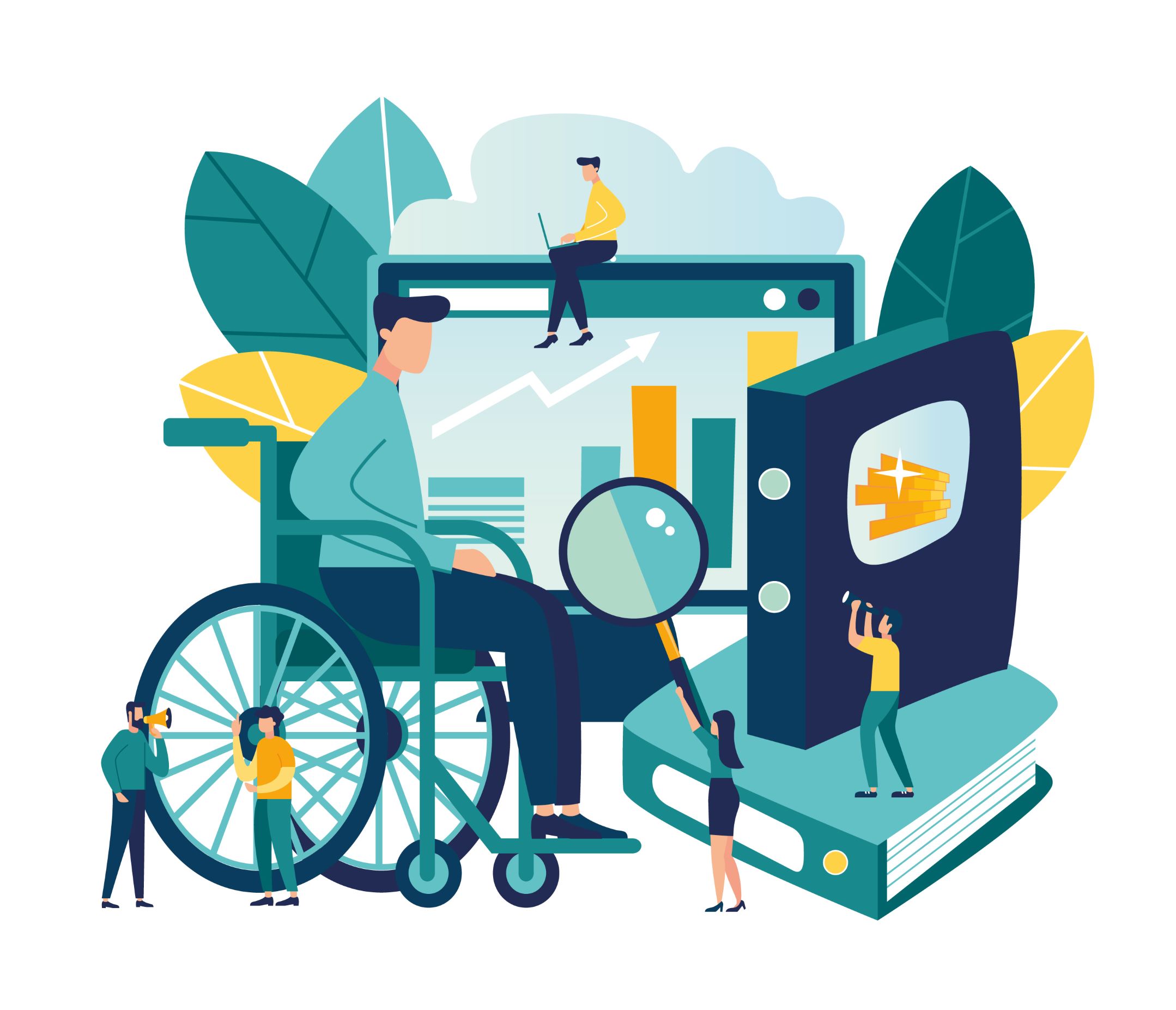Compared to previous years, public events and space are more accessible to people with disabilities than ever before.
The presidential inauguration featured American Sign Language (ASL) interpretation, and an increasing number of social media posts now contain image descriptions (alt text) for users with visual impairments.
Although great strides have been made, there’s still much to do in solving accessibility issues for people with disabilities to ensure everyone has equal access to all parts of modern life.
How Many People Have Disabilities?
Sixty-one million adults in the U.S. live with a disability. That’s one in every four adults, which means it’s crucial to make both physical and online spaces as accessible as possible to correct the imbalances of privilege in American society.
Diversity is our greatest societal virtue, so our efforts to include all people must be diverse in return.
In pursuit of that diverse accessibility, it should be noted that there are many types of disabilities, and not all of them require the same assistance.
Here is a breakdown of the functional disability types in adults:
- Mobility (difficulty walking or climbing stairs) – 13.7%
- Cognition (difficulty concentrating, remembering, or making decisions) – 10.8%
- Independent living (difficulty doing errands alone) – 6.8%
- Hearing (deafness or difficulty hearing) – 5.9%
- Vision (blindness or difficulty seeing) – 4.6%
- Self-care (difficulty dressing or bathing) – 3.7%
Quality of Assistance Tools
To accommodate all of these varying needs, it’s important to consider what type of assistance is already provided to the public, some of which offer more accessibility than others.
While closed captioning can be helpful to those with impaired hearing, the captions are often delayed and inaccurate compared to the actual audio. In addition, there is no legal requirement for paid content less than ten minutes long to include closed captions, which includes the Super Bowl commercials audiences look forward to each year. Cued speech transliterations or audio descriptions are often more reliable for people with hearing impairments, and human ASL interpreters are even more so.
Screen readers, software programs that allow users to read text displayed on a computer screen with a speech synthesizer or braille display, are helpful for those with visual impairments. However, website and program integration has been slow.
The majority of websites aren’t designed to work properly with screen readers. This renders many important pages unreadable for assistive technology, including sites for job applications, e-commerce, and government services.
Alt text, an accurate and concise description of an image, has been growing in usage among Instagram and Facebook users who include it in their own captions as a grassroots movement (much like the inclusion of personal pronouns in a profile). The companies themselves are finally updating their AI-generated image captions to be more perceptive and detailed, though this capability is still being tested.
Medical Accessibility in COVID-19
Accessibility considerations are even more important during a worldwide medical crisis like the COVID-19 pandemic. Out of all adults with disabilities between the ages of 18 and 44, one in three do not have a usual healthcare provider and have a left a healthcare need unmet healthcare because of cost in the past year. For adults with disabilities between the ages of 45 and 64, one in four did not have a routine check-up in the past year.
For many people with impairments, staying healthy and accessing healthcare was a challenge even before the coronavirus changed daily life.
While some COVID-19 testing sites offer accommodations for patients with disabilities, such as large text, braille, or recorded audio information, many are set up as quick walk-in or drive-thru facilities, which can be difficult to access for Americans with disabilities.
Making COVID-19 testing and vaccination sites accessible is vital to overcoming the pandemic as a whole. Patients with limited mobility may require spaces that are easy to get to and move around inside, and cognitive and sensory disabilities should be taken into consideration when interacting with patients. Explaining medical processes with clear information or having patience with patients who are sensitive to sounds, lights, or touch are steps toward bringing proper care to those with specific needs.
Offering medical interpreters (of ASL and other languages) and translations of medical and clinical materials is of the utmost importance to make sure all patients have equal access to information about their health and agency over their bodies.
Moving forward, accessibility must be prioritized as a forethought rather than an afterthought. Taking the time to ensure assistance is available to those who need it is how we can make society and life as a whole more equitable, prosperous, and enjoyable for all.
At G3 Life Sciences, we believe language improves lives. But to be truly inclusive, that language must be accessible to everyone and we are proud to offer a full range of accessibility services. Contact G3 Life Sciences for support in making your business more accessible and inclusive.
